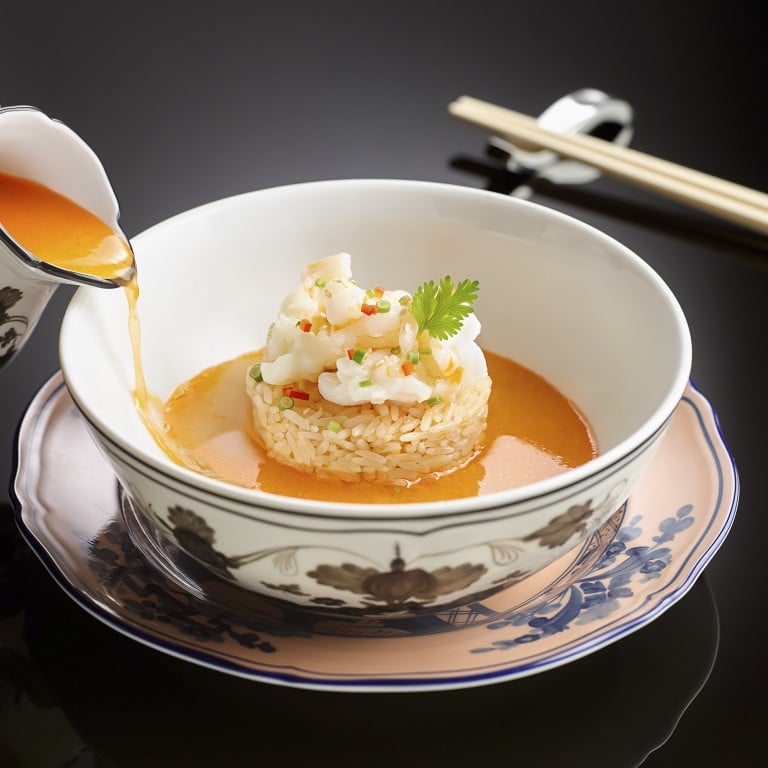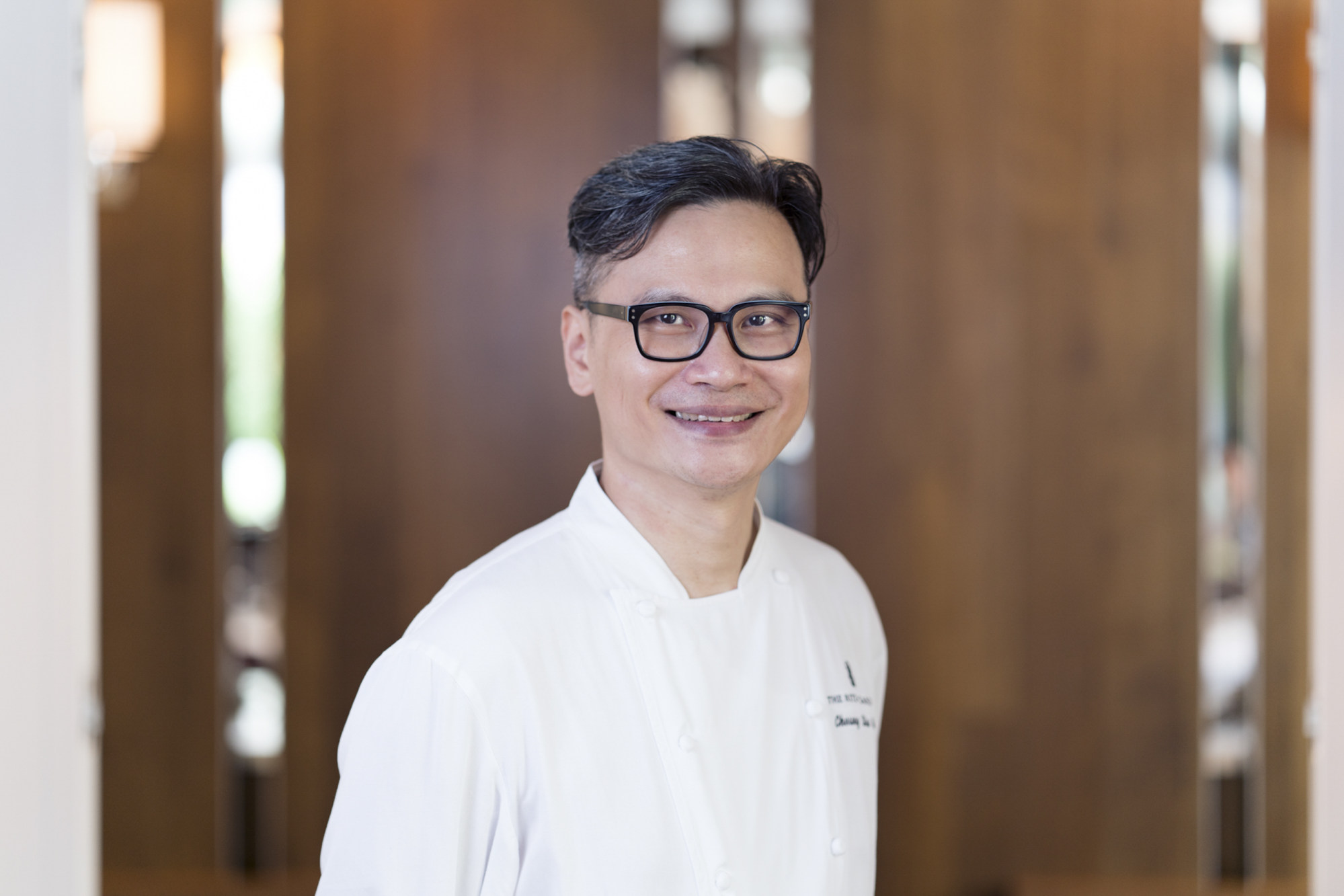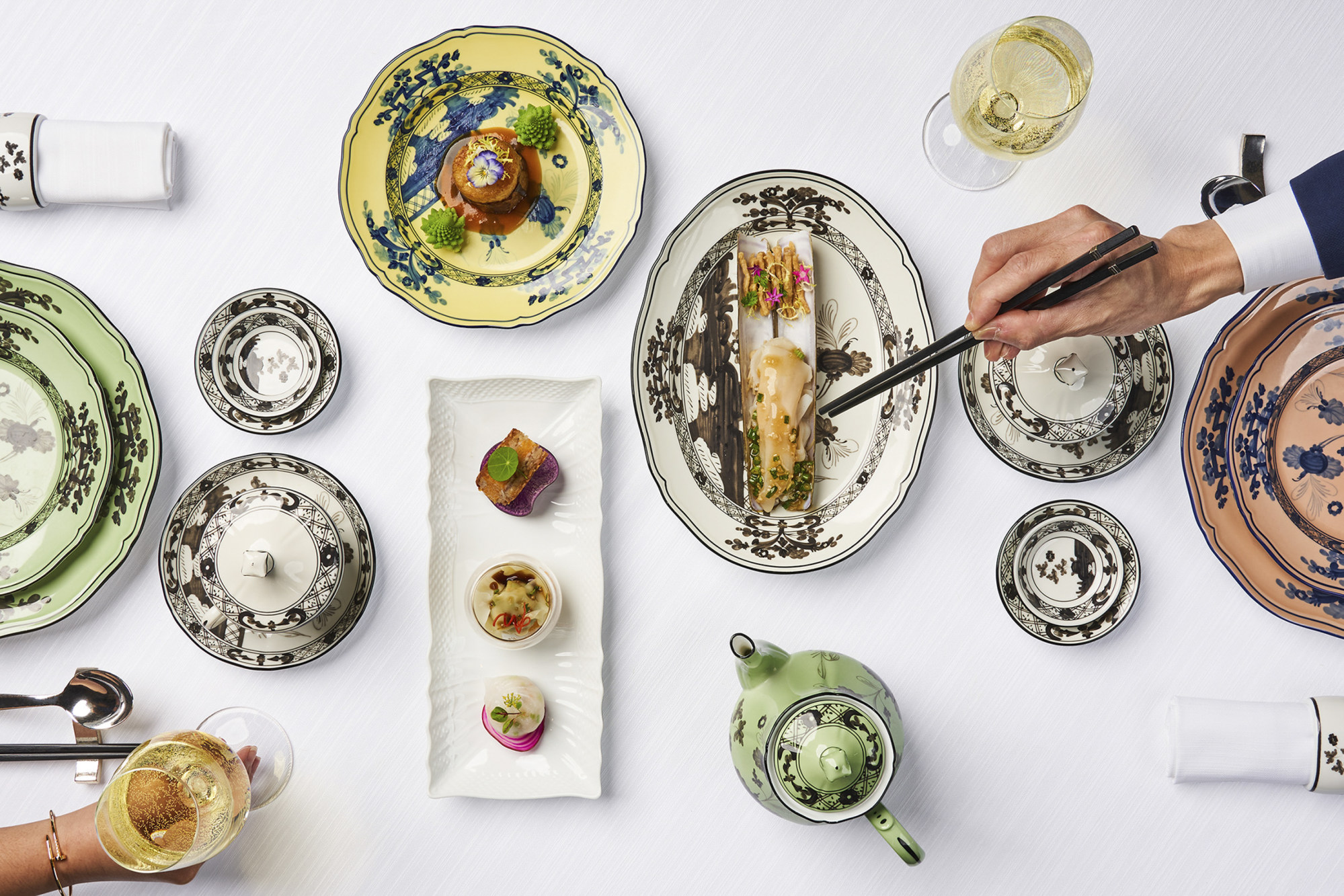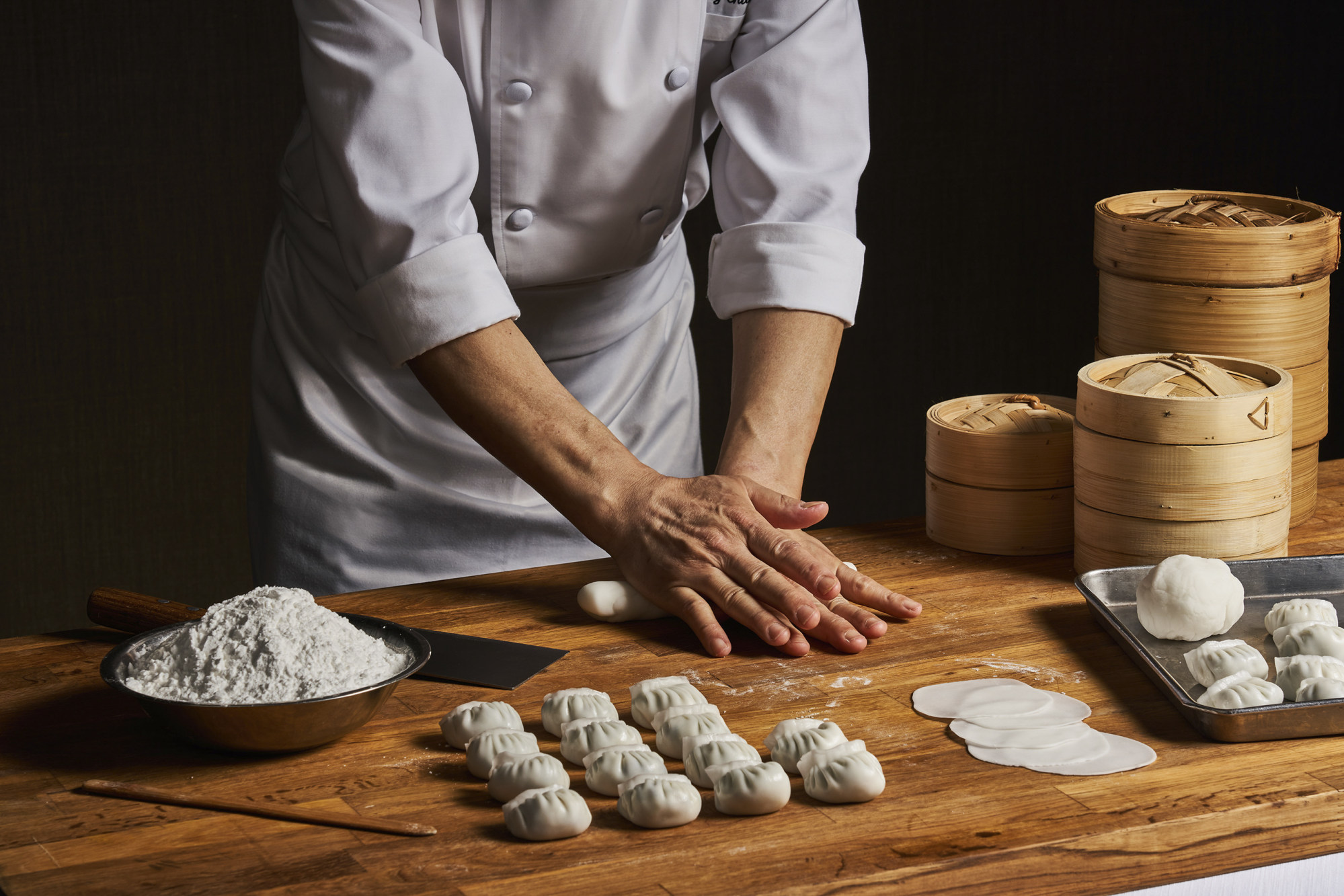
Profile | How a Hong Kong chef is championing fine Cantonese cuisine at Michelin-starred Singapore restaurant
- Cheung Siu-kong is chef de cuisine at the Summer Pavilion – Singapore’s only Cantonese restaurant on the 2023 Asia’s 50 Best Restaurants long list
- His goal is to showcase the flavours of Cantonese food so that when people dine at his restaurant, they leave with a great impression of the cuisine
Meticulously plated on hand-painted Richard Ginori tableware, the poached rice topped with delicate morsels of tender lobster arrives at the table. A waiter then ceremoniously pours a vivid orange-hued broth into the dish, its delicate aroma awakening the senses and whetting the appetite.
Sometimes, if one is lucky, chef de cuisine Cheung Siu-kong of the one-Michelin-star Summer Pavilion, located at The Ritz-Carlton, Millenia Singapore, will personally do the honours. At the same time, he takes the opportunity to interact with diners, inquiring about their experience and listening to their feedback.
“Lobster poached rice may be quite a common Cantonese dish, but how we present it here is different from other places,” says Hong Kong-born Cheung. “By pouring the soup tableside, diners get to enjoy an experiential element where the aroma of the dish is enhanced. This further elevates the dining experience.”
Cheung has been whipping up Cantonese delights for three decades, his love for the cuisine cultivated from the age of seven, when he would help his grandmother in the kitchen.

He scored a coup this year when Summer Pavilion placed No 86 on the Asia’s 50 Best Restaurants list, the first time a Cantonese restaurant in Singapore has made it onto the list since 2015.
While the Lion City certainly has no shortage of Chinese – and in particular Cantonese – restaurants, there are few that have garnered international acclaim thus far. But Cheung says this is not because there is a lack of culinary talent in Singapore but more likely due to the perception that Cantonese dining tends to be more family style.
‘Dream ingredient’: would you eat ramen with alien-like isopod sea creature?
“Most people think that Chinese food is very accessible, common and communal. So because of this perception that it is not fine dining, maybe they think [the cuisine] is not worth honouring at this calibre,” says Cheung.
This is one of the reasons he has taken a novel approach towards food presentation at Summer Pavilion as well as what he terms “the total package” – focusing also on decor and ambience.
True to the restaurant’s moniker, its elegant Tonychi Studio-designed interior features a modern Chinese garden and a glass pavilion. Floral motifs are expressed through details ranging from the menu to the tableware to evoke the atmosphere of dining in a garden, while staff are dressed in tuxedo-inspired uniforms designed by Masaru Mineo, of Art Marginal, to formalise the dining experience.

Of course, the linchpin of it all is Cheung’s Cantonese fare, which is cooked using traditional techniques to bring out the natural flavours of the ingredients. Menu highlights include double-boiled sea whelk soup with fish maw and chicken served in a coconut. In fact, one element that Cheung says he will not modify is the use of traditional Cantonese techniques.
“There is no need to change the flavours of Cantonese food,” says Cheung. He recalls how a guest once confided about dining at a Cantonese restaurant that served fusion fare and ended up confused by his meal. “The identity of the food was lost.”
“When guests come to Summer Pavilion, I must ensure that they notice these are the actual, traditional flavours of Cantonese cuisine that I have expressed through my cooking,” Cheung says.

Like the intricate presentation of the lobster poached rice, he takes great pains to adapt the presentation of dishes to modern preferences, such as by serving up fish that is already filleted instead of bringing the entire fish to the table. That said, he notes, the restaurant can also accommodate requests for traditional communal plating, which older generations may still prefer.
“This helps to change assumptions about Cantonese food, especially among youngsters, as I think they place great importance on the entire experience,” observes Cheung, who began his career in 1987 at Hong Kong’s renowned Lei Garden Restaurant in North Point before moving to Singapore’s Lei Garden outpost in 1996.
He joined contemporary Cantonese restaurant Summer Pavilion in 2003 and has been there ever since, steering the establishment to its Michelin star, in 2016, and now, a place on the Asia’s 50 Best Restaurants long list.
I enjoy taking note of my guests’ preferences to ensure that the next time they dine here, I am able to deliver a more customised experience
One of the factors that he believes has hampered more Asian or Chinese restaurants from rising up the rankings could be that these establishments overlook their marketing or networking efforts.
“In Asian restaurants and among Asian chefs, many tend to focus very strongly on the cooking. They take pride in delivering the food but maybe there is less emphasis on networking or public relations,” he says. This has resulted in a flourishing of Cantonese restaurants that thrive on word of mouth but may not necessarily be known outside select circles of diners.
One differentiating factor at Summer Pavilion is that Cheung enjoys interacting with his guests personally. This is why he takes time to chat with diners, which is somewhat of a rarity among more traditionally inclined Cantonese chefs.
“I enjoy taking note of my guests’ preferences to ensure that the next time they dine here, I am able to deliver a more customised experience. These interactions have also helped in terms of reputation building,” he says.

Another food trend he has wholeheartedly embraced is four-hands, or guest collaborations with other chefs. “This allows for the exchange of ideas and techniques and also to expose our cuisines to a different audience,” says Cheung.
He recently held a four-hands dinner in collaboration with the one-Michelin-star Hong Kong outpost of Yong Fu, a Shanghai-based establishment focusing on cuisine from China’s Ningbo city.
The menu featured alternating dishes from Ningbo, which incorporates fermented foods and salt, with the lighter flavours of Cantonese cuisine. The contrasting flavours worked out well, allowing the unique characteristics of each cuisine to shine, he says.

“Through such collaborations, diners have the opportunity to appreciate the uniqueness of each cuisine in terms of the ingredients, techniques and sauces used,” he says.
“And at the end of the day, it is my goal to showcase the flavours of Cantonese food so that when people dine here, they leave with a great impression of the cuisine.”

